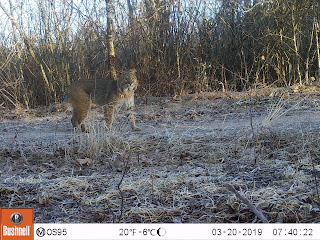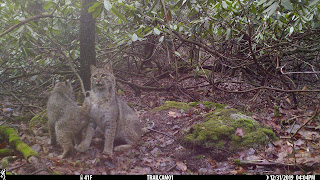They’re the most popular pet turtle
in the United States and available at pet shops around the world, but because
red-eared sliders live for about 30 years, they are often released where they
don’t belong after pet owners tire of them. As a result, they are considered
one of the world’s 100 most invasive species by the International Union for the
Conservation of Nature.
And southern New England isn’t
immune to the problems they cause.
“I hear the same story again and
again,” said herpetologist Scott Buchanan, a wildlife
biologist for the Rhode
Island Department of Environmental Management. “’We bought this turtle for a
few dollars when Johnny was 8, he had it for 10 years and now he’s going to
college, so we put it in a local pond.’ That’s been the story for hundreds and
thousands of kids in recent decades.”
 |
| Red-eared slider (left) and smaller native painted turtles (Todd McLeish) |
Red-eared sliders are native to the
southeast and south-central United States and northern Mexico, where they are
commonly found in a variety of ponds and wetlands. Buchanan said they are
tolerant of human disturbance and tolerant of pollution, and they are dietary
generalists, so they can live almost anywhere. And they do.
They breed throughout much of
Australia as a result of pets being released, and in Southeast Asia they are
raised as an agricultural crop and have displaced numerous native species. In
the Northeast, they live in the same habitat as eastern painted turtles, one of
the area’s most common species, but they grow about 50 percent larger. Numerous
studies suggest that sliders outcompete native turtles for food, nesting and
basking sites.
Despite concerns about their effect
on native turtle populations, red-eared sliders are still legal to purchase in
Rhode Island and most of the United States, though Buchanan said that in the
Ocean State they may only be sold by a licensed pet dealer and cannot be
transported across state lines. Those that purchase a slider must keep it
indoors and must never release it into the wild, including into a private pond.
“But people often aren’t aware of
the regulations, or they don’t bother to look at them, or they just don’t
follow them,” Buchanan said. “We see lots of evidence of sliders, especially in
parts of the state where there are lots of people. The abundance of red-eared sliders
in Rhode Island is tied to human population density, which means mostly
Providence and the surrounding communities. But I’ve also found them in Newport
and Narragansett and elsewhere.”
Sliders are especially common in the
ponds at Roger Williams Park in Providence and in the Blackstone River Canal
While conducting research for his
doctorate at the University of Rhode Island from 2013 to 2016, Buchanan
surveyed ponds throughout the state looking for spotted turtles, a species of
conservation concern in the region. During his research, he also documented
other turtle species, including many red-eared sliders.
“The good news was that while
spotted turtles can occupy the same habitat as red-eared sliders, I found a
greater probability of occupancy by spotted turtles at the opposite end of the
human density spectrum as I found sliders,” he said. “Spotted turtles tend to
occur where human population density is low, so at least at this moment in
time, we would not expect red-eared sliders to be directly competing with
populations of spotted turtles.”
Nonetheless, Buchanan advocates what
he calls a “containment policy” to keep the sliders from expanding their range
in the state.
“It’s mostly about public
education,” he said. “We want to make sure people know not to release them in
their local wetlands. If we found sliders in an important conservation area –
Arcadia, for example – we might consider removing them, though we’re not doing
that now.
“They’re well-established in Rhode
Island now,” he added, “so the thought of eradicating them does not seem like a
feasible management solution. We just have to live with them, but we also have
to try to minimize their spread and colonization of new wetlands.”
No other non-native turtle from the
pet trade besides the red-eared slider has been found to be a common sight in
the wild in Rhode Island, though Buchanan said he recently had a report of a Russian
tortoise – another popular pet – that was discovered wandering around Coventry.
For those who want to get rid of a
pet red-eared slider, Buchanan doesn’t offer any easy alternatives.
“You’ve got to be committed to
housing that turtle for 30 or 40 years until it dies,” he said. “That’s why
this is such a problematic issue. It’s easy to buy a teeny turtle for ten bucks
and think it’s no big deal, but that animal is going to live for a long time.
When you purchase it, you have to be responsible for it for the rest of the
turtle’s life.”
This article first appeared on EcoRI.org on June 24, 2020.






